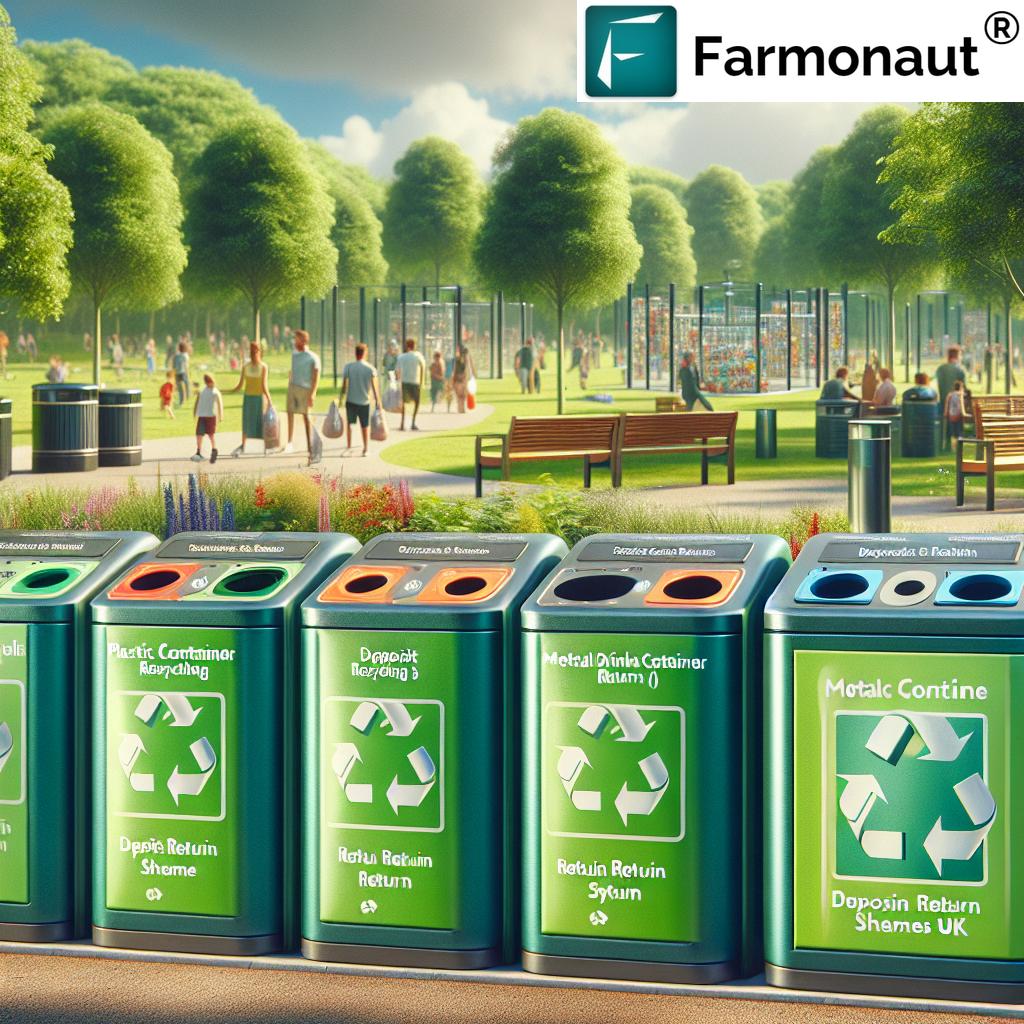Countryside Stewardship Scheme: 7 Shocking Farmer Wins!
Table of Contents
- Introduction to the Countryside Stewardship Scheme (CSS)
- Historical Overview and Development
- Key Structure and Components of CSS
- Key Benefits of the Countryside Stewardship Scheme for Farmers
- 2024 Updates and Recent Changes
- Eligibility & Application Process
- Integration with Other Environmental Initiatives
- Countryside Stewardship Scheme: 7 Shocking Farmer Wins!
- How Modern Technology Supports Countryside Stewardship
- Frequently Asked Questions (FAQ)
“Over 20,000 English farmers joined the Countryside Stewardship Scheme to boost biodiversity and sustainable land management.”
Understanding the Countryside Stewardship Scheme: Sustainable Farming’s Cornerstone
At the heart of England’s environmental land management strategy lies the Countryside Stewardship Scheme (CSS). As farmers, land managers, foresters, and rural communities, we recognize the profound impact that a properly structured agri-environmental programme can have on our landscape and our livelihoods. The CSS is thoughtfully designed to promote sustainable farming practices, enhance biodiversity, protect water and natural resources, strengthen rural communities, and deliver tangible benefits for future generations.
In this comprehensive guide, we’ll explore every critical aspect — from the scheme’s transformative structure, eligibility criteria, and application pathways, to the role of advanced technology like Farmonaut and actionable tips for farmers eager to win with sustainable farming in England.
Whether you’re an agreement holder managing thousands of hectares, a smallholder, or an agricultural business looking to improve your environmental impact, this guide is tailored for you.
Key Focus: “Countryside Stewardship Scheme”
- Sustainable farming practices that rejuvenate the English countryside
- Flexible tiers for varied agricultural and forestry operations
- Woodland grants and support for increased biodiversity
- Streamlined applications with enhanced financial incentives
- Integration with other agri-environmental initiatives
A Brief History of the Countryside Stewardship Scheme
The Countryside Stewardship Scheme (CSS), launched in 1991 by the Countryside Commission, began as a pioneering initiative to transform farmland management and safeguard England’s natural environment. Since then, it has evolved through key stages:
- Pilot Phase (1991): Setting the foundation for sustainable land management, focusing on sites with significant environmental value.
- Expansion (2005): The programme rapidly grew, counting over 16,600 agreement holders covering 531,280 hectares of farmland and countryside.
- RDPE Relaunch (2014): As part of the Rural Development Programme for England (RDPE) 2014-2020, the CSS was reinvigorated with a £3.1 billion government commitment for agriculture and forestry.
- Integration & Innovation: Integrating prior environmental stewardship schemes for streamlined support, broadening its scope to include woodland grants, capital options, and biodiversity-centric agreements.
The result is a comprehensive environmental land management england approach—one that is recognized globally for its sustainability objectives, adaptability, and long-term rural benefits.
“The scheme has funded more than 10,000 hectares of new woodland creation across England since its launch.”
The Structure of CSS: Five Key Components for Environmental Gains
The Countryside Stewardship Scheme is uniquely structured to target the full range of land management needs in England. Let’s examine its five main components, each tailored for specific objectives:
1. Higher Tier Environmental Agreements
- Purpose: For environmentally significant sites such as SSSIs (Sites of Special Scientific Interest) and Natura 2000 areas.
- Details: Five or ten-year agreements with high-value payments and a competitive application system.
- Focus: Complex environmental management—wetland restoration, bird conservation, water and air quality improvements, creating wildlife habitats.
2. Mid Tier Countryside Stewardship
- Aimed at: A wider set of farmland types and rural holdings throughout England.
- Terms: Five-year agreements with streamlined, non-competitive application and 130+ options for sustainable farming and land management.
- Example Options: Wild bird seed margins, buffer strips, low-input grassland, and nutrient management.
3. Wildlife Offers
- Fast-track for: Arable, lowland grazing, upland ring-fencing, and mixed farming.
- Simplified Process: Choose from pre-approved options to deliver rapid biodiversity enhancement.
- Typical Actions: Sowing nectar flower mixes, creating insect-rich grass buffer strips, and providing shelter for farmland birds.
4. Woodland Grants and Support
- Eligibility: For new and existing woodland managers, from small sites to large rural estates.
- Funding: Woodland creation, woodland management plans, restocking, tree health, and capital works.
- Impact: Improved carbon sequestration, shading for rivers and streams, flood management, and support for native species.
5. Capital Grant Options
- Targeted Funding: For specific environmental works — hedgerow restoration, air and water quality improvement, footpath upgrades, tree planting, and more.
- Benefits: Direct financial support for physical investments that deliver rapid, visible improvements to the landscape and ecosystems.
Who is This Scheme For?
- Agreement holders from various agricultural and forestry backgrounds
- Land managers of all scales – from large estates to tenant farmers and community trusts
- Rural businesses seeking to diversify and improve sustainability in their landscapes
Why Does a Tiered System Matter?
A tiered structure means greater flexibility, fairer financial support, and more precise environmental objectives at each landscape scale. It rewards both innovative, large-scale habitat management and everyday sustainable decisions by farmers.
Key Benefits of the Countryside Stewardship Scheme for Farmers
| Scheme Feature | Estimated Environmental Impact | Potential Financial Benefit | Sustainability Outcome |
|---|---|---|---|
| Biodiversity Enhancement Options | Pollinator populations can increase by up to 25% Farmland bird numbers rise in target areas |
Up to £2,500/year for wild bird covers, buffer strips, flower-rich margins | Greater habitat connectivity, ecosystem resilience |
| Nutrient & Water Management | 15% reduction in fertilizer use Less nitrate/phosphate run-off into rivers |
Up to £750/year for nutrient planning and buffer strips | Cleaner waterways, lower input costs |
| Woodland Grants and Support | Over 10,000 hectares of new woodland created in England | Establishment grants up to £8,500/hectare; ongoing management up to £350/hectare/year | Carbon sequestration, improved flood management, woodland wildlife support |
| Higher Tier Environmental Agreements | Restores rare habitats (wetlands, ancient meadows) Boosts designated site quality |
Custom agreements, often between £3,000-£10,000/year | Enhanced biodiversity, landscape scale environmental improvements |
| Capital Grants (e.g. hedgerows, tree planting) | Expanded linear features for wildlife, improved air/water quality | Up to £20/m for hedge planting/restoration; £1,242/hectare for floodplain works | Improved soil & water retention, climate mitigation |
Explore more practical ways to optimize your land use and monitor the impact of these practices on our Farmonaut Carbon Footprinting platform — an essential tool for visualizing your farm’s journey to net zero!
2024 Updates: New Payment Rates, Premium Options & Unified Processes
- 10% Increase in Payment Values: Agreement holders now receive higher agri-environmental payments across the board (applied even to existing and renewed contracts).
- Premium Actions for Biodiversity: New options include £765 per hectare for lapwing nesting plots, and up to £1,242 per hectare for river-floodplain connectivity.
- Unified Application Process: The Mid Tier Countryside Stewardship is now integrated with the Sustainable Farming Incentive (SFI) application—create, submit and monitor all environmental actions in one place!
- Enhanced Support for Existing Environmental Assets: Payments now offered for maintaining priority grasslands, wetlands, and rare scrub habitats.
- Flexible Start Dates: Entry agreements can now begin monthly instead of once yearly, giving farmers and land managers easier access to financial support.
These updates demonstrate a government commitment to both biodiversity enhancement and farmer-friendly processes.
Eligibility & Application: Who Can Apply and How?
One of the greatest strengths of the Countryside Stewardship Scheme is its range of open doors — making it possible for diverse types of land managers to join the programme. Eligibility varies by component, with options for higher and mid-tier agreements, woodland creation, and more.
Eligibility Criteria
- Higher Tier: For those managing high ecological value sites—such as SSSIs, Natura 2000, and landscape-scale conservation zones. A demonstrated proposal to deliver significant environmental benefits is required.
- Mid Tier & Wildlife Offers: Open to a wide array of farming systems including arable, mixed, and livestock production. Most farmers in England with land at their disposal qualify.
- Woodland Grants: Both newly establishing woodlands and existing woodland managers—across farm, private, or community lands.
- Capital Grants: For targeted works like hedge laying, water crossing construction, or soil management activities.
Application Process (Streamlined from 2024)
- Register: Through the Rural Payments Agency platform.
- Choose Tier & Options: Assess your land’s features and objectives (using Farmonaut’s large scale farm management app can help you identify eligible farm components and environmental assets).
- Prepare Evidence & Submit: For the Higher Tier, submit alongside detailed evidence and, where required, expert conservation plans.
- Advisory Support: Seek catchment sensitive farming advice for water quality or air pollution issues. Natural England and Forestry Commission provide technical input.
- Ongoing Management: Agreements now start at any month, with payments and compliance supported throughout the contract period.
Did you know? Your real-time resource monitoring and compliance reporting can be simplified using Farmonaut’s Fleet Management solutions and API-enabled data access for ongoing farm operations.
Integration: How CSS Works with England’s Other Environmental Initiatives
The CSS isn’t an isolated programme. Its design actively integrates with other agri-environmental and sustainable farming incentive efforts to amplify impact across England’s countryside.
- Sustainable Farming Incentive (SFI): The SFI rewards us for the adoption of proven sustainable practices — from cover cropping to low-input grassland. The now unified application and compliance process let us combine SFI and CSS mid tier countryside stewardship benefits efficiently.
- Catchment Sensitive Farming (CSF): This offers specialist advice, training, and capital support to manage water and air pollution, especially nitrate and ammonia emissions. It complements our land management for water protection.
- Woodland Creation Grants: The woodland grants and support inside CSS are integrated with national forestry and climate targets, helping us meet net zero, biodiversity, and flood management goals.
- Traceability for Environmental Claims: For those exporting or working with major supply chains, Farmonaut’s blockchain-based traceability module verifies our environmental stewardship actions, ensuring compliance and enhancing trust with buyers and consumers.
The Big Picture: England’s Environmental Land Management Approach
- Holistic Impact: By integrating payment schemes, woodland creation, and catchment sensitive farming advice, CSS delivers a holistic strategy for countryside resilience and prosperity.
- Data-Driven Management: Using innovative technology—including Farmonaut’s crop plantation and forest advisory platform—we can map, monitor, and demonstrate incremental progress across all these initiatives!
Learn how to automate and integrate environmental monitoring or compliance data into your own systems via the Farmonaut Satellite & Weather API and explore integration opportunities through the API Developer Documentation.
Countryside Stewardship Scheme: 7 Shocking Farmer Wins!
Through direct experience and the latest CSS impact assessments, these are the standout farmer wins that prove how well-designed environmental land management England can deliver robust results—financially, ecologically, and socially:
-
Dramatic Biodiversity Increases:
- Implementing targeted wild bird seed mixes and pollinator “insect strips” boosted pollinator counts by up to 25% and delivered early-spring food for red-listed species.
- Widespread adoption across arable and mixed farms due to flexible options in the mid tier countryside stewardship.
-
Woodland Creation—Climate & Wildlife Win-Win:
- Strategic woodland grants funded over 10,000 ha of new woodland, sequestering thousands of tonnes of CO₂ and reducing flood risks in rural catchments.
- Ongoing grants keep these new woods thriving and support forest biodiversity, including bats, dormice, and woodland birds.
-
Organic Matter & Soil Health Gains:
- Capital options and rotational incentives encourage grass leys, cover cropping, and reduced tillage.
- Result: Improved water retention, reduced runoff, and consistently higher yields — validated by Farmonaut’s satellite-based crop health analytics.
-
Enhanced Water Quality for Local Communities:
- Buffer strips, permanent grassland near streams, and catchment-sensitive farming advice have resulted in measurable drops in nitrate and phosphate run-off into the UK’s most vulnerable watercourses.
- Farmers in catchments with high CSF engagement report up to 15% less input costs due to smarter nutrient targeting.
-
Increased Financial Security, Even Under Uncertainty:
- Higher and mid tier agreements provide stable revenue, buffering against market fluctuations—ideal for arable, mixed, and livestock enterprises.
- Premium payments for high-priority actions help offset initial investments.
-
Agile Management Responding to Climate Threats:
- Monthly start dates, rolling application windows, and new integration with the SFI mean that farmers can quickly adapt CSS commitments as conditions change, helping manage droughts, floods, or emerging pest outbreaks.
-
Demonstrable Traceability & Proof for Supply Chains and Financing:
- CSS compliance and environmental “proof” now supports easier crop loan approvals and more credible insurance claims through platforms such as Farmonaut’s crop loan and insurance verification services.
- Farmers with documented stewardship have competitive advantages when supplying food, fibre, or biomass to environmentally conscious markets.
These farmer wins reflect how CSS is much more than a subsidy: it’s a forward-looking business strategy deeply integrated with resilient, productive, and sustainable farming across rural England.
How Modern Technology Supports Countryside Stewardship
Our ability to meet evolving environmental objectives is supercharged by advanced technology platforms that offer data-driven insights, remote monitoring, and seamless integration with CSS implementation and compliance:
Why Use Farmonaut for Your Environmental Land Management?
- Real-Time Satellite Monitoring: Assess crop health, soil moisture, and vegetation status across your hectares to match CSS reporting with unbiased data—no expensive hardware needed.
- AI-Based Farm Advisory: Jeevn AI delivers management actions based on your CSS goals: from water management to carbon-smart options.
- Blockchain Traceability: Use secure, blockchain-based trace verification to demonstrate CSS compliance for supply chains, authenticity claims, and eco-labels.
- Fleet & Resource Management: Efficiently manage vehicles and field operations aligned with your environmental agreements using Farmonaut’s fleet management dashboard.
- Carbon Footprinting & Compliance: Visualize the environmental impact of every field, woodland patch, or capital improvement—and report instantly to regulators or lenders.
Access all of Farmonaut’s precision agriculture tools via desktop, Android, iOS or API—for farms of any size or type.
Conclusion: Countryside Stewardship Scheme – Your Next Step for Sustainable, Profitable Farming
The Countryside Stewardship Scheme stands as more than a set of government checks—it’s a catalyst for environmental improvement, rural prosperity, and the transformation of farming as we know it. From biodiversity enhancement options to strategic woodland grants and support, robust capital investment pathways, and new premium payments, it’s never been easier or more rewarding to align our business with environmental objectives.
Our success with sustainable farming practices depends on understanding modern options, leveraging cutting-edge technologies like Farmonaut, and confidently navigating the application process. Whether managing a few fields or thousands of hectares, every action counts for England’s natural heritage and our farm businesses.
Let’s continue to build a resilient, profitable, and thriving English countryside—together!
Frequently Asked Questions (FAQ): Countryside Stewardship Scheme & Environmental Land Management England
-
Q: What is the main goal of the Countryside Stewardship Scheme?
A: The scheme aims to promote sustainable farming, biodiversity enhancement, woodland creation, and better use of England’s land and water resources through tiered agreements and financial support. -
Q: Who can apply for the CSS?
A: Most land managers in England—including farmers, foresters, tenant farmers, and community land organizations—are eligible, with specific criteria for each CSS component. -
Q: What’s the difference between the Mid Tier and Higher Tier agreements?
A: The Mid Tier is non-competitive and covers a broad range of management options for most farm types. The Higher Tier supports more complex, high-value environmental sites with bespoke, competitive agreements. -
Q: Are capital grants only for new woodland?
A: No, capital grants support a range of habitat enhancements—hedgerows, fencing, streamside buffers, and watercourse crossings—regardless of woodland creation. -
Q: How can technology like Farmonaut aid in CSS participation?
A: Farmonaut’s satellite monitoring streamlines reporting, compliance, resource management, and can enhance your success with environmental land management objectives. -
Q: What if I farm less than 5 hectares?
A: While some options require a minimum area, there are often tailored agreements and capital grants—especially within the wildlife offer and catchment-sensitive farming advice categories—for smaller farms. -
Q: Do I have to manage every part of my farm under CSS?
A: No, CSS is designed to be flexible. You can commit selected parcels (hectares) or management options based on your own objectives and eligibility. -
Q: Where do I find further support for application or compliance?
A: Use official government portals for applications, but for advisory, monitoring, and traceability solutions, platforms such as Farmonaut can be invaluable.




















